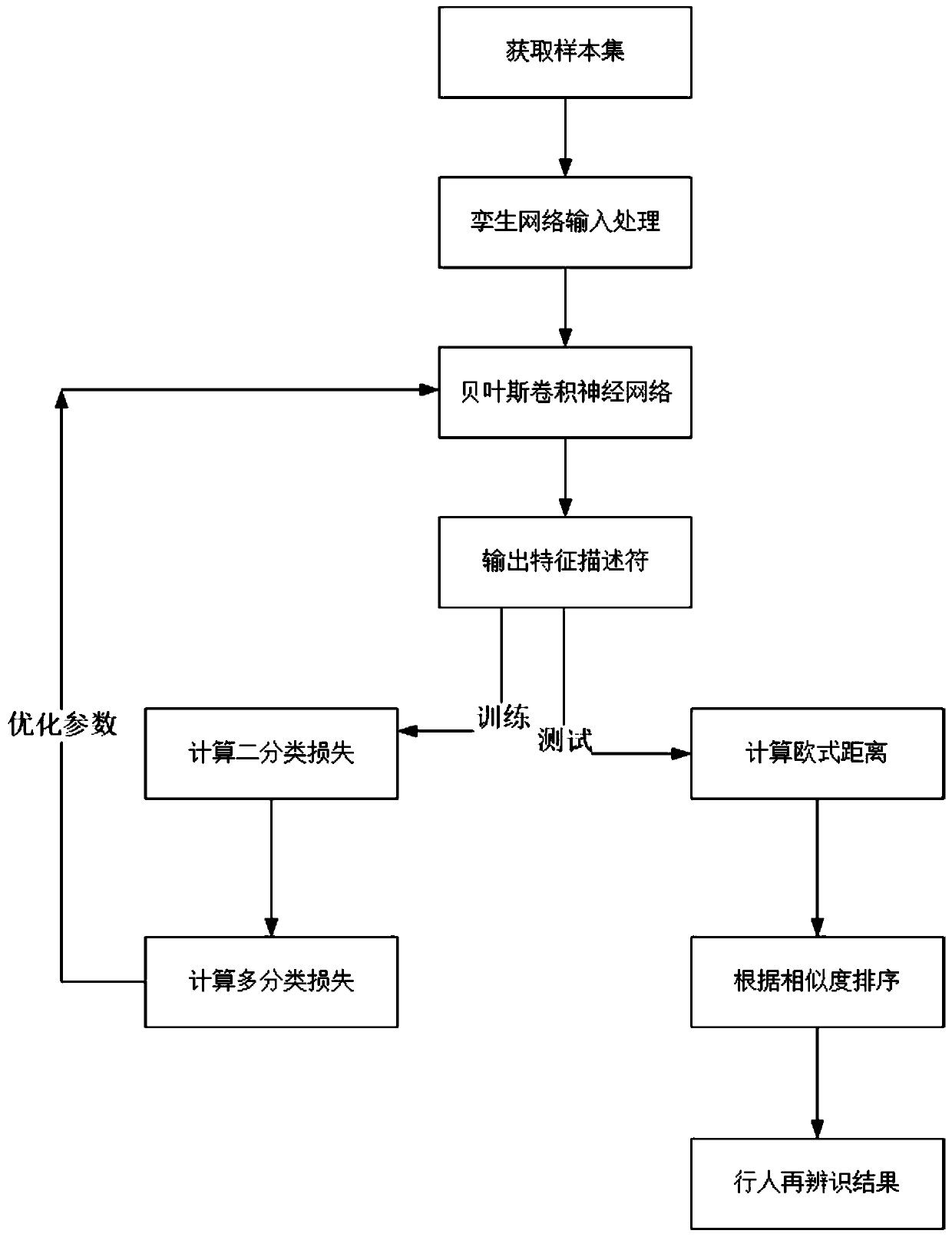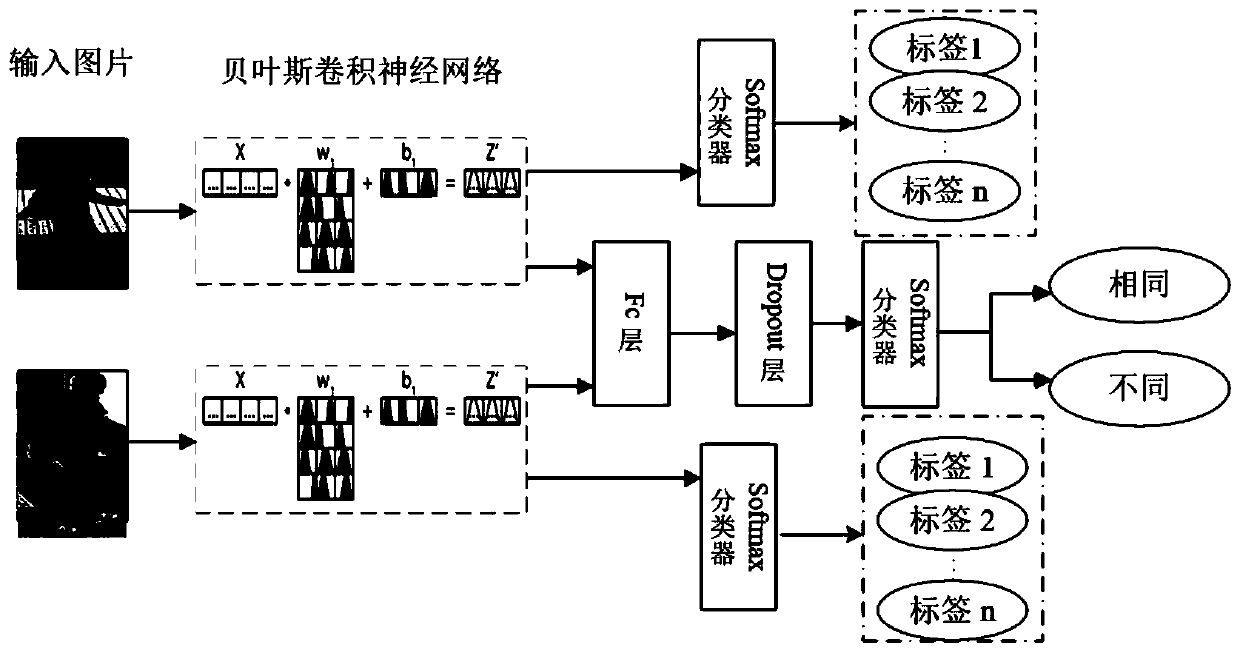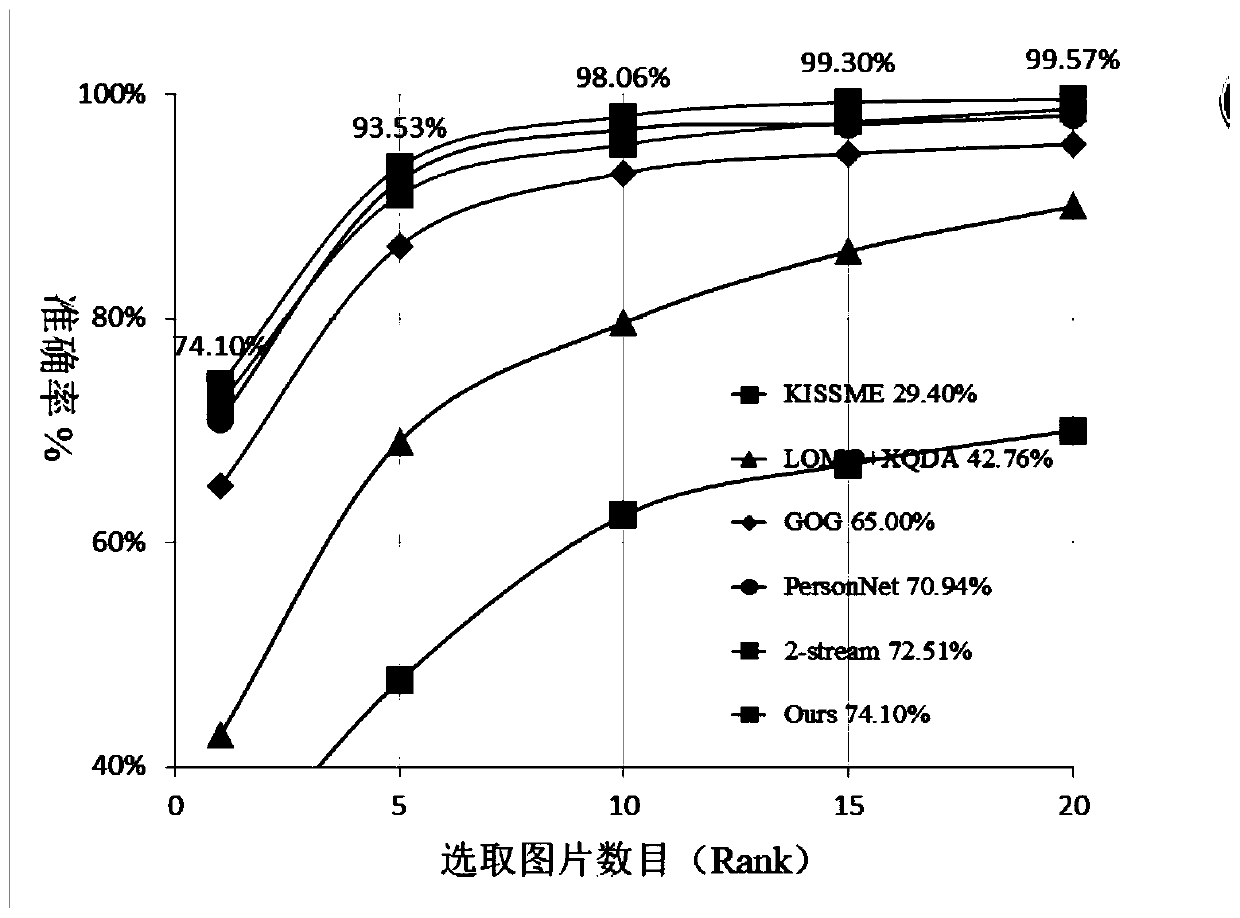A pedestrian re-identification method based on uncertainty optimization
An uncertainty and identification method technology, applied in the field of pedestrian re-identification based on uncertainty optimization, can solve the problems of pedestrian over-fitting and uncertainty, low recognition rate, etc., and improve accuracy , the effect of improving accuracy and robustness
- Summary
- Abstract
- Description
- Claims
- Application Information
AI Technical Summary
Problems solved by technology
Method used
Image
Examples
Embodiment
[0051] In order to make the object, technical scheme and advantages of the present invention clearer, below in conjunction with embodiment, specifically as figure 1 The shown algorithm flow chart further describes the present invention in detail. It should be understood that the specific embodiments described here are only used to explain the present invention, but not to limit the present invention.
[0052] Step 1: Input processing, specifically described as follows: The present invention uses a twin network structure, and uses two original images belonging to the same or different pedestrians as the input of two isomorphic networks, and the specific implementation is as follows:
[0053] (1) The present invention arbitrarily takes two images from the pedestrian image, divides them into multiple image pairs, and uses them as the input of the Siamese network;
[0054] (2) The present invention cuts and normalizes the processed picture pairs, and simultaneously performs opera...
specific Embodiment approach
[0095] figure 1 It is the realization flowchart of the present invention, and the specific implementation mode is as follows:
[0096] 1. Twin network input processing;
[0097] 2. Construct a Bayesian convolutional neural network;
[0098] 3. Calculate the multi-classification loss function during training;
[0099] 4. Calculate the binary classification loss function during training;
[0100] 5. Weighted multi-classification and binary classification loss functions during training, backpropagation optimizes Bayesian convolutional neural network parameters;
[0101] 6. Use the Euclidean distance calculation formula during the test to obtain the final distance between the pedestrian image to be identified and the comparison image;
[0102] 7. Sort the distances during the test, and obtain the matching and sorting of the comparison image library corresponding to the pedestrian to be identified.
PUM
 Login to View More
Login to View More Abstract
Description
Claims
Application Information
 Login to View More
Login to View More - R&D
- Intellectual Property
- Life Sciences
- Materials
- Tech Scout
- Unparalleled Data Quality
- Higher Quality Content
- 60% Fewer Hallucinations
Browse by: Latest US Patents, China's latest patents, Technical Efficacy Thesaurus, Application Domain, Technology Topic, Popular Technical Reports.
© 2025 PatSnap. All rights reserved.Legal|Privacy policy|Modern Slavery Act Transparency Statement|Sitemap|About US| Contact US: help@patsnap.com



